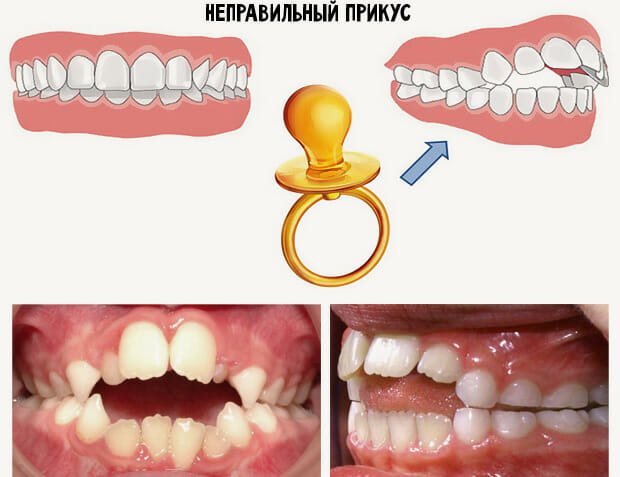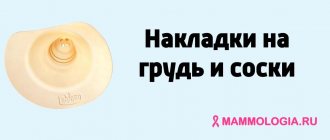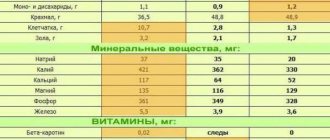December 21, 2016
Averyanova Sveta
When a baby is born, you can forget about silence in the apartment for a long time. A local doctor, grandmother or friend who has experienced the first troubles of motherhood can advise giving a pacifier to a restless newborn.
A lot of pacifiers on store stands involuntarily attract the eye: bright, funny, they seem to be an indispensable attribute of infancy. Does a newborn need a pacifier, why, when and how to give it - questions that worry many mothers.
Why do babies love pacifiers?
All healthy children have a need to suck the mother's breast - this is how an innate reflex manifests itself. Without it, the newborn would be doomed to death. Sucking movements reduce tension in the spine received after childbirth. In the process, a signal is delivered to the baby’s brain that everything is fine, and he quickly calms down.
By the age of six months, the sucking reflex gradually weakens, and by the age of 3-4 years it usually disappears completely. Most children, long before this age, cease to need both the nipple and the mother's breast.
This is interesting ! Eternally busy parents have existed at all times, so the pacifier was used as a breast surrogate among many peoples. The Egyptians used smooth pebbles for this purpose, the Chinese made leather teats from the udder of a cow, and in Russia they chewed bread, placed it in a bag and gave it to the baby.
At what age can you give your baby a pacifier?
The decision when you can give a pacifier to a baby, from how many months old, depends on what type of feeding he is on. If a baby is given breast substitute before feeding, he will be tired by feeding time.
There is no need for a pacifier in the maternity hospital: until breastfeeding returns to normal, it is better to put a taboo on its use.
This period ranges from two weeks to a month . If neither the mother nor the one-month-old baby has a special need, it is better not to offer a pacifier at all.
Pacifier, pacifier... pros and cons
For most parents, the question of the need to buy a pacifier for a child is practically not raised; they take this accessory for granted. But this is not surprising; taking a closer look at the babies who are walking, you can immediately notice how every second baby thoughtfully sucks on a pacifier. Parents, following the stereotype, try to do everything possible to ensure that the child gets used to the pacifier. But at first, many babies actively spit out, refusing the pacifier. In this case, there is no need to persist, force the child, hold the pacifier with your finger, and the like. It is possible to achieve results in the end, but the question naturally arises: is it necessary to give a child a pacifier?
Pros and cons
Against:
1. Experts categorically do not recommend giving a pacifier to children during the period of establishing breastfeeding. A pacifier, no matter what its anatomical shape. is very different from the mother’s breast, and such early habituation can disrupt the baby’s correct latching on the breast and, as a result, injury to the nipple.
2. Using various breast substitutes, in particular pacifiers, may not always be pleasant. The first thing you need to pay attention to is allergic activity. It's no secret that pacifiers are made from natural latex, which contains a large number of protein fractions, most of which are allergens. Differences in breast and pacifier sucking may cause developmental problems
maxillofacial apparatus, which leads to malocclusion and speech therapy problems in the future.
We should not forget that the pacifier is a constant source of infections for the baby. No matter how vigilant parents are, it is almost impossible to discern the cleanliness of a pacifier
. The child will constantly throw it, it will rub against various objects and all the microbes will invariably end up in the baby’s mouth and then in the intestines.
3. Another disadvantage of a pacifier is the need to wean the child from sucking it.
when he grows up. This is where a lot of different problems start. But if the child continues to suck his fingers after using a pacifier, then it is probably better to allow him to use a pacifier sometimes. Often parents use a pacifier for other purposes. At the first opportunity, they try to put it in the baby’s mouth, instead of going up to the child, picking it up and calming it down. Because of this, the child is deprived of certain emotional components.
Behind:
1. If breastfeeding didn’t work out for you and you had to switch your baby to formula, you simply need a pacifier for your newborn. After all, it often happens that the baby cries, screams and it is impossible to calm him down with anything; in this case, the nursing mother will give “boobs”, and the non-nursing mother will give her a pacifier, and the baby will immediately calm down. In addition, if you do not teach your baby to use a pacifier, he may eventually begin to suck his thumb, which will lead to improper formation of teeth and gums.
Be sure to boil and rinse them thoroughly before each use. Nipples with caps and special containers for pacifiers are very convenient for storage. Having such a container with you in the stroller, you can always replace a fallen “sedator”. Never lick a fallen pacifier, human mouth
- this is a place where it is full of different bacteria, including carious, putrefactive ones, and the baby has absolutely no use for them.
For safety reasons, do not hang the pacifier with an elastic band or ribbon around the baby’s neck; use special clothespins with plastic chains for this purpose. There is no need to dip your pacifier in sugar or honey; this will bring you nothing but early caries.
2. Makes it safer to sleep on your back. Doctors do not recommend placing infants on their backs in the first months of life for fear that children may choke when regurgitating or suffocate when the tongue retracts. But if the baby sucks on a pacifier, the likelihood of such tragedies is significantly reduced.
What should a good quality pacifier for newborns look like?
. Pacifiers come in silicone and latex, silicone is more wear-resistant, but you need to take good care of them during the period when the child is teething, they are easily bitten. If there is the slightest damage, throw away the old pacifier; it is very good to always have spare pacifiers. Many babies prefer latex nipples, as they are softer and better mimic the surface of the skin. Pacifiers also come in different shapes; many manufacturers claim that their products do not spoil the bite, and even imitate a female nipple. But basically, pacifiers are round (they look like the usual Soviet ones), flat, teardrop-shaped and with an oblique bite, the so-called orthopedic. You can buy your child the most expensive orthopedic pacifier from a well-known manufacturer, and he will love to suck on a regular cheap round pacifier, as they say, it depends on the taste and color... Pacifiers with rings that glow at night are very convenient, they are easy to find in the crib when the baby bursts into tears during sleep.
So the answer to the rhetorical question is whether to give a pacifier to a child, parents decide on their own.
Benefits of a pacifier
In the complete absence of breastfeeding, a situation is often observed: a quickly satiated baby is deprived of the opportunity to satisfy the sucking reflex. He may begin to put fingers, rattles in his mouth, or suck on the edge of the diaper. Then the pacifier will become a real helper for the baby and his mother.
A pacifier is a good way out of the following situations:
- Malaise . Since sucking reduces excitability and dulls pain, offer your baby a pacifier before giving the medicine.
- Protection against sudden infant death syndrome . The drug prevents the transition of infant sleep into the pathological deep phase, the retraction of the tongue and the blocking of the airways. At this moment, if breathing suddenly stops, the nipple can save a life.
- Walking in sub-zero temperatures . Crying in the frosty air can have consequences ranging from a runny nose to bronchitis. If it is difficult to rock your baby while walking, it is better to give him a pacifier.
- Incorrectly formed bite . One of the main complaints about nipples is that they interfere with the natural development of the jaws. But orthodontic pacifiers prevent jaw underdevelopment during breastfeeding.
For a mother, a pacifier can also be a good help if the baby requires the breast both day and night, especially if there are still small children in the family.
Should the baby be left with dad or nanny? He will calmly endure his mother's short-term absence if he is offered an artificial substitute.
This is interesting ! Getting stuck in the oral phase of development, according to Sigmund Freud and Milton Erickson, that is, the sucking reflex unsatisfied at a certain time, can later affect the character of the grown-up baby. Passivity, negativism, and a tendency toward depression are formed. A girl in such a situation may be cool towards her children.
Cons of using a pacifier

Arguments against include:
- Disturbance in the development of the jaws . Frequent sucking on a poorly chosen pacifier can lead to deformation of a child's face: it will look like a rabbit's face with elongated front teeth and a slanted chin. In many cases, a pacifier is the cause of malocclusion.
- Formation of dependence . Very quickly, parents get used to comforting their baby with a pacifier, without trying to find out the cause of the anxiety. There comes a time when a baby without a pacifier is unable to calm down or fall asleep.
- Violation of the formation of the speech apparatus . Often the speech therapist at the appointment asks the first question: did the child suck a pacifier? Children who do not use it begin to speak earlier and more clearly.
- Violation of hygiene rules . Even frequent disinfection and sterilization of nipples does not save babies from stomatitis and indigestion. The appearance of ulcers in the mouth, which the mother often does not notice, aggravates the problem: the child does not let go of the pacifier from his mouth.
- The appearance of colic . When a baby sucks on a pacifier, especially one with a mouthpiece without holes, he or she swallows more air than usual, which increases gas production. The baby's tummy hurts, and he begins to suck on the pacifier more and more often.
- Psychological trauma . Often the baby cries, needing maternal communication and warmth. And instead of a warm and loving mother, he receives a rubber substitute. Frequent repetition of the situation leads to psychological discomfort and cooling in relationships.
- Allergic reactions . The phenomenon is rare, but can cause parents and children a lot of unpleasant moments.
- Financial question . Despite its insignificant size, the price of the pacifier is not so small: a high-quality model costs 200-300 rubles. For training, you need to buy 4-5 pieces, and it is not a fact that the baby will like any of them. You need to have 1-2 replacement pacifiers in case of contamination or loss, and change them every month, select them according to age as you grow older.
Table 1. Advantages and disadvantages of a pacifier
| pros | Minuses |
| It is better to teach a child to suck a pacifier rather than a finger. | Before each use, the product must be prepared: sterilized or washed with soda. |
| Quickly calms down during severe agitation. | Forms a habit that is difficult to unlearn. |
| Distracts from painful sensations. | A dirty pacifier, like any unsterile object, can become a source of infection. |
| A correctly chosen model contributes to the formation of a natural bite. | An irregularly shaped model leads to maxillofacial defects. |
| With artificial feeding, it compensates for the lack of sucking movements. | Impaired lactation in mothers during breastfeeding. |
It is important to know. Breast substitutes of any kind, including pacifiers, are not recommended by the WHO (World Health Organization).
Watch this detailed video in which child psychologist Marina Romanenko will talk about all the pros and cons of using a pacifier.
Harm from pacifiers in preschool age consultation (junior group) on the topic
The benefits and harms of pacifiers for teeth
The need for a pacifier
Pacifier: does the child need it or not, how harmful is it and when should the child be weaned from it?
First, let’s answer the question: why does a child need a pacifier at all?
One of the main life-support reflexes of a child in infancy is sucking. In many ways, this reflex is satisfied during breastfeeding. However, many children continue to feel the need to suck after breastfeeding, manifesting this through their restless behavior. In this case, you can give the child a boiled pacifier for a short time to calm him down.
Pacifier and baby
For children with increased excitability, a pacifier can be given before falling asleep. However, after the baby falls asleep, the pacifier must be carefully removed.
You should not use a pacifier very actively every time you need to calm your child down in order to do some of your own business - by doing so, you are not only psychologically distancing yourself from your baby, but also harming his health.
Choosing a pacifier
An important point is the selection of nipples when artificially feeding a child. In this case, the nipple should be elastic, short and have several small holes so that after the bottle is tipped over, the food flows out in drops and not in one stream. The holes in the nipple should be small, since during bottle feeding the baby must work independently, stretching his jaws so that he can subsequently develop a correct bite. During feeding, the bottle should be held so that it does not put pressure on the baby's jaws.
Negative consequences of pacifier abuse
There is practically no harm to health in the fact that a child sucks a pacifier at a very early age (except for the moment of addiction). But if the active use of a pacifier continues after six months of age and especially at the time of teething, the following negative changes may occur:
- An incorrect bite is formed
- Possible speech disorders in the child in the future
- The child's breathing begins to be disrupted
- Possible slowdown in child's mental development
- You may be allergic to the material from which the pacifier is made.
Special orthodontic pacifiers are not as harmful as regular ones, but even when using them, try not to turn pacifier sucking into a bad habit.
When and how to wean a child off a pacifier?
One of the main questions when using a pacifier is when to start weaning your child off it in order to minimize harm to his health?
Doctors recommend doing this at the age of 5-6 months, when the sucking reflex begins to gradually fade away. Many children even “signal” this by spitting out the pacifier that is bothering them from their mouth.
It is necessary to wean your child off the pacifier gradually. It is advisable to consult with a child psychologist.
It is not recommended to use radical means, for example, the widespread advice to lubricate the pacifier with mustard - in this case, you can cause burns to the oral mucosa, not to mention mental trauma for the child.
You should not delay weaning your child off the pacifier. Remember, the later you start this process, the more likely it is to cause your child extreme stress.
If a child uses a pacifier while teething, he will inevitably begin to bite the pacifier and often tear off pieces of it with his teeth, which can lead to their entry into the respiratory tract.
Using a pacifier, therefore, after reaching the age of six months is undesirable, and after a year is even harmful, since it prevents the extinction of the sucking reflex and suppresses all other types of activity, including motor activity.
Sucking a pacifier after a year distracts the baby and isolates him from many impressions of the outside world. The child masters speech later, and sometimes develops intellectually more slowly.
Conclusions:
Using a pacifier at an early age (up to six months) is most often necessary, although you should not abuse it.
Using a pacifier after six months is very undesirable due to possible harm to the child’s body and his future development as a person.
Tips for use
- Choose the product correctly .
Pacifiers are made from silicone and latex; the first polymer material is denser, transparent and hypoallergenic. Latex models, according to the authoritative opinion of children's doctor Komarovsky, are suitable for children who can boast of protruding teeth. All products are intended for different age categories. Nipples have different structures: classic (round), physiological and orthodontic. - Maintain good hygiene . Store sterile replacement pacifiers in a jar or container with a lid and disinfect and replace them according to package instructions. Do you want your baby to have caries, gastritis or a cold? Lick the pacifier before giving it to your baby.
- Monitor the integrity of the product . If cracks appear, and even more so a hole or other damage, the pacifier must be changed without regret.
- Before giving a pacifier, determine the cause of the discomfort . Perhaps the baby is sweating or cold, he is worried about a full diaper, or he is scared. Provide comfort - and the baby will not need a sedative.
- Limit the time you use your pacifier . Give it only when there is really a need for it: on the street, when feeling unwell or overly excited. Remove the pacifier from a sleeping baby; it is not advisable to teach him to sleep with a pacifier in his mouth.
- Wean on time . If the baby does not wean himself off the pacifier by the age of one year, then it will be difficult for him to wean himself off the habit.
Are you planning to use a pacifier or not?
- Yes, sometimes 58%, 190 votes
190 votes 58%190 votes - 58% of all votes
- No, I am against pacifiers 22%, 71 votes
71 votes 22%
71 votes - 22% of all votes
- Yes, there's nothing wrong with that 20%, 64 votes
64 votes 20%
64 votes - 20% of all votes
Total votes: 325
03.07.2018
×
You or from your IP have already voted.
The pacifier and breastfeeding
The opinion of most experts is unanimous: a healthy breastfed baby does not need a pacifier, and its long-term use is harmful. It should be used as a last resort: when it is necessary to leave the baby in the care of relatives, to go to a public place, etc. There are several reasons for this:
- Sucking a pacifier from birth reduces the consumption of mother's milk, which can have a negative effect on the baby's weight gain and lead to weakness and deficiency of various substances.
- Milk in the breast should flow in response to the request shown during sucking. If there is no demand, there will be no milk.
- Breast sucking and pacifier sucking are technically different actions. With a large amount of liquid, the baby will not have difficulty sucking; if the volume of milk decreases, he may refuse to breastfeed.
Why do my nipples hurt when feeding?
Common causes of nipple pain:
- Your nipples are getting used to it.
During the first few weeks of breastfeeding, your nipples may feel sore because, like your breasts, they are adapting to the feeding process. These unpleasant sensations usually go away when you and your baby get better at feeding.
- Incorrect nipple latching.
If your baby doesn't grasp the nipple correctly when feeding, it can cause discomfort due to the baby's mouth rubbing against the skin.
- Milk callus.
This is a painful white area on or around the nipple. It is thickened milk or skin that has grown over the milk duct. The milk cannot leave the duct and accumulates under the skin, forming a callus.
- Corn.
Unlike breast milk, a regular callus on the nipple is formed due to improper grip, poorly selected pad, or friction of the breast pump against the skin.
- Short bridle.
If your baby's tongue doesn't reach his bottom lip when he cries, or if his tongue is shaped like a heart, he may have a frenulum tie. Due to a short frenulum, the baby is unable to latch onto the breast normally, which can cause mother’s nipples to hurt.
- Flat or depressed nipples.
If, when you squeeze the areola (the pigmented area around the nipple) about 2-2.5 centimeters behind the nipple, the nipple does not harden and begin to “stick out,” you may have flat nipples. And if, during the same check, the nipple goes inward, then it is considered depressed. The child cannot grasp such nipples normally, and this causes pain in the mother.
- When you wean your baby and he continues to suck.
Not only is this painful, but it can also damage breast tissue and the nipple.
- Tight bra.
A tight bra puts pressure on the nipple and irritates the skin.
- Detergents and fragrances.
Some products and fragrances dry out the skin of the nipples and cause irritation. This reaction also happens to washing powder.
- Vasospasm.
After breastfeeding, sometimes mothers experience pain that radiates from the nipple to the mammary gland. This occurs due to narrowing of the blood vessels in the breast (vasospasm).
- Mastitis.
This is an infectious disease of the breast. It develops when milk cannot leave the mammary gland normally because the milk duct is clogged. Milk accumulates, causing pain and swelling of the breast and nipple. Symptoms of mastitis also include red stripes on the chest, flu-like symptoms such as high fever and pain in the joints and limbs, and lumps in the chest.
- Thrush.
This is an infectious fungal disease that affects the nipples and causes pain in them. If your child has white or yellowish spots on the mucous membranes of his mouth or lips, or cracked skin at the corners of his lips, he may have thrush. Symptoms of thrush in a nursing mother: cracked nipples, stabbing pain in the breasts during or after feeding, itching or burning in the nipples, severe redness of the nipples, shiny or scaly skin of the nipples.











